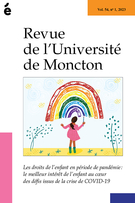FR:
À l’été 1851, après le succès de The Scarlet Letter et de The House of the Seven Gables, Nathaniel Hawthorne s’accorde un répit et il fait un retour à la littérature jeunesse. Durant presque deux ans, il se consacre à la rédaction de A Wonder-Book for Girls and Boys et Tanglewood Tales, deux volumes qui regroupent une douzaine de contes mythologiques qu’il met en scène, c’est-à-dire chaque conte du premier recueil est précédé d’une introduction et il est suivi d’une conclusion et l’ensemble des contes du second sont précédés d’une introduction. Le présent article vise à étudier les traductions françaises des anthroponymes (des noms de fleurs) choisis par Hawthorne pour désigner et décrire les personnages de ces introductions et de ces conclusions, proposées par Léonce Rabillon, Henry Borjane, Pierre Leyris et Frédérique Revuz dans leurs traductions et adaptations. Il y est plus particulièrement question de dénotation, de connotation et d’encrage socio-culturel en langues source et cible ; ces éléments semblant jouer un rôle de premier plan dans la traduction du réseau onomastique créé par l’auteur américain pour accompagner ses contes mythologiques.
EN:
During the summer of 1851, following the success of The Scarlet Letter and The House of the Seven Gables, Nathaniel Hawthorne takes a break and makes a return to children’s literature. He devotes the following two years to A Wonder-Book for Girls and Boys and Tanglewood Tales, two books that include a dozen of staged Greek myths, i.e. every myth of the first book is preceded by an introduction and followed by a conclusion, and the myths of the second book are preceded by an introduction. This article aims to study the French translations of the anthroponyms (flower names) chosen by Hawthorne to designate the characters of these introductions and conclusions, and given by Léonce Rabillon, Henry Borjane, Pierre Leyris and Frédérique Revuz in their translations and adaptations. More specifically, it deals with denotion, connotation and sociocultural anchorage in source and target languages; elements appearing to play a leading role in the translation of the onomastic network created by the American author to accompany his Greek myths.




